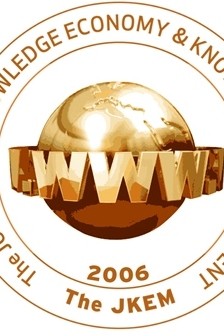INTERNATIONAL PRACTICE OF WORKPLACE LEARNING AND PERFORMANCE IMPROVEMENT: A STATUS REPORT
HPT, HRD, WLPI, workplace learning, performance improvement
INTERNATIONAL PRACTICE OF WORKPLACE LEARNING AND PERFORMANCE IMPROVEMENT: A STATUS REPORT
HPT HRD, WLPI, workplace learning, performance improvement, international practice,
___
- Bing, J. W., Kehrhahn, M., & Short, D. C. (2003). Challenges to the field of human resource development. Advances in Developing Human Resources, 5(3), 342-351.
- Cho, Y. & Yoon, S. W. (2010). Theory development and convergence human resource fields: Implications for human performance technology. Performance Improvement Quarterly, 23(3), 39-56. doi:10.1002/piq.20089.
- ISPI (2012, July 30). CPT Brochure. Retrieved from http://www.ispi.org/pl/cpt/cpt-brochure.pdf.
- Jang, H. Y. (2008). Themes and issues as reflected in human performance technology literature: A content analysis. Unpublished doctoral dissertation, Indiana University.
- Kahnweiler, W. M. (2009). HRD as a profession: Current status and future directions. Human Resource Development Quarterly, 20(2), 219-229. doi: 10.1002/hrdq.20011.
- Lauer, M. J. (2008). Validating the ISPI standards and principles for theCertified Performance Technologist credential. Unpublished doctoral dissertation, Indiana University.
- Marquardt, M., & Berger, N. (2003). The future: Globalization and new roles for HRD. Advances in Developing Human Resources, 5(3), 283-295.
- Mohindra, A. B. (2011). The 2011 ASTD salary survey: Learning pays and it pays to learn. Training and Development, 65(8), 56-61.
- NAICS. (2012, July 31). North American Industry Classification System. United States Census Bureau. Retrieved from http://www.census.gov/cgi-bin/sssd/naics/naicsrch?chart=2012.
- Pershing, J. A. (2006). Human performance technology fundamentals. In J. A. Pershing (Ed.),Handbook of human performance technology: Principles · Practices· Potential (3rd ed.) (pp.5-34). San Francisco: Pfeiffer.
- Pershing, J. A., Abaci, S., Symonette, S., & Brunclik, C. (2008). ISPI’s 2008 practice and job analysis. PerformanceXpress, May 2008.
- Pershing, J. A., Cheng, J., & Foong, K. P. (2008). International society for performance improvement professional practices survey: A report. Performance Improvement, 45(7), 39-47.
- Pershing, J. A., Lee, J.,&Cheng, J. (2008). Current status, future trends, and issues inhumanperformance technology, part 1: influential domains, current status, and recognition of HPT. Performance Improvement, 47(1), 9–17.doi: 10.1002/pfi.174.
- Rojas, A. M., & Zintel, D. E. (1999). Practicing human performance technology in a globalbusiness environment. In H. D. Stolovitch and E. J. Keeps (Eds.), Handbook of HumanPerformance Technology: Improving individual and organizational performance worldwide(2nd ed.) (pp. 916-935). San Francisco: Jossey-Bass/Pfeiffer.
- Ruona, W. E. A., Lynham, S. A., & Chermack, T. J. (2003). Insights on emerging trends and the future of human resource development. Advances in Developing Human Resources, 5(3), 272-282.
- Stolovitch, H., & Keeps, E. (1999). What is performance technology? In H. D. Stolovitch and E.J. Keeps (Eds.), Handbook of Human Performance Technology: Improving individual andorganizational performance worldwide (2nd ed.) (pp. 3-23). San Francisco: Jossey-Bass/Pfeiffer.
- Swanson, R. A. (2001). Human resource development andits underlying theory.Human Resource Development International, 4(3), 299-312.doi:10.1080/13678860110059311.
- Swanson, R. A., & Holton III, E. F. (2009). Foundations of human resource development (2nded.). San Francisco: Berrett-Koehler.
- Weinberger, L. A. (1998). Commonly held theories of humanresource development.Human Resource Development International, 1(1), 75-93.doi: 10.1080/13678869800000009.
- Yayın Aralığı: Yılda 2 Sayı
- Başlangıç: 2006
- Yayıncı: İbrahim Güran YUMUŞAK
HUMAN RESOURCE MANAGEMENT AND CORPORATE SOCIAL RESPONSIBILITY: A SYSTEMATIC LITERATURE REVIEW
Elizabeth Real De Oliveira – Pedro FERREIRA, Elizabeth Real de Oliveira, İrina SAUR, Pedro Ferreira, - AMARAL, Irina Saur-Amaral
Fatih Yardimcioğlu – Ahmet GÜLMEZ, Fatih YARDIMCIOĞLU, Ahmet GÜLMEZ
THE EFFECT OF TECHNOLOGICAL AND COMMERCIAL VIABILITY ON MICROSOFT TAIWAN INNOVATION COMPETENCY
- CHENG, Cheng-Ping Shih, Ping SHIH, Ya-Chung Hung, - YA, Chung HUNG
ALVİN TOFFLER’A GÖRE BİLGİ ÇAĞININ YENİ PARADİGMASI: KAOS TEORİSİ
Nuray Mercan – Kemal DEMİRCİ, Nuray MERCAN, Emine OYUR, Kemal DEMİRCİ, Emine OYUR
A. Esther Joshua GOJER, A. Esther Joshua GOJER, Jeff M. ALLEN
KNOWLEDGE POTENTIAL: MAIN AGGREGATED ASSESSMENT PRINCIPLES
Antanas Buracas – Vytas NAVICKAS, Antanas Buracas, Algis ZVIRBLIS, Vytas Navickas, Algis Zvirblis
COMPETITIVE ANALYSIS OF BRAND MANAGEMENT
Mehmet Emin OKUR, Mehmet Emin OKUR, Ali Talip AKPINAR
A HISTORICAL STUDY OF HUMAN RESOURCE DEVELOPMENT LESSONS FROM THE GALLIPOLI CAMPAIGN
Hatice Erkekoğlu – K. Halil ARIÇ, Hatice ERKEKOĞLU, K. Halil ARIÇ
EĞİTİM HARCAMALARI VE EKONOMİK BÜYÜME İLİŞKİSİ: SINIR TESTİ YAKLAŞIMI
Recep Emre ERİÇOK, Recep Emre Eriçok, Veli YILANCI, Veli Yılancı
